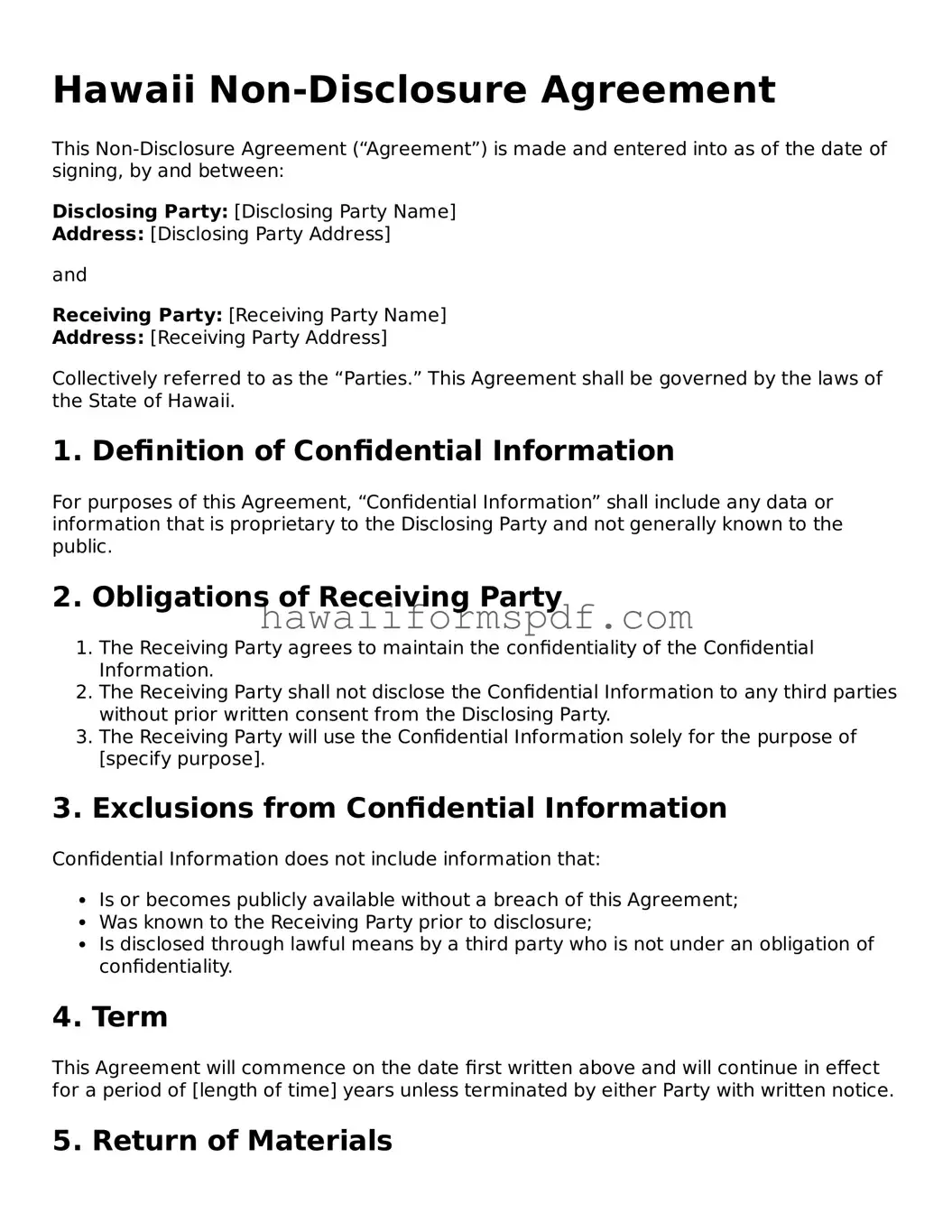Hawaii Non-Disclosure Agreement
This Non-Disclosure Agreement (“Agreement”) is made and entered into as of the date of signing, by and between:
Disclosing Party: [Disclosing Party Name]
Address: [Disclosing Party Address]
and
Receiving Party: [Receiving Party Name]
Address: [Receiving Party Address]
Collectively referred to as the “Parties.” This Agreement shall be governed by the laws of the State of Hawaii.
1. Definition of Confidential Information
For purposes of this Agreement, “Confidential Information” shall include any data or information that is proprietary to the Disclosing Party and not generally known to the public.
2. Obligations of Receiving Party
- The Receiving Party agrees to maintain the confidentiality of the Confidential Information.
- The Receiving Party shall not disclose the Confidential Information to any third parties without prior written consent from the Disclosing Party.
- The Receiving Party will use the Confidential Information solely for the purpose of [specify purpose].
3. Exclusions from Confidential Information
Confidential Information does not include information that:
- Is or becomes publicly available without a breach of this Agreement;
- Was known to the Receiving Party prior to disclosure;
- Is disclosed through lawful means by a third party who is not under an obligation of confidentiality.
4. Term
This Agreement will commence on the date first written above and will continue in effect for a period of [length of time] years unless terminated by either Party with written notice.
5. Return of Materials
Upon termination of this Agreement, the Receiving Party agrees to return or destroy all materials containing Confidential Information upon request by the Disclosing Party.
6. No License
This Agreement does not grant any rights to the Receiving Party to use the Disclosing Party's Confidential Information except as specified herein.
7. Miscellaneous
This Agreement constitutes the entire understanding between the Parties. Any amendments must be in writing and signed by both Parties.
IN WITNESS WHEREOF, the Parties have executed this Non-Disclosure Agreement as of the date first above written.
Disclosing Party Signature: ___________________________
Date: ___________________________
Receiving Party Signature: ___________________________
Date: ___________________________
